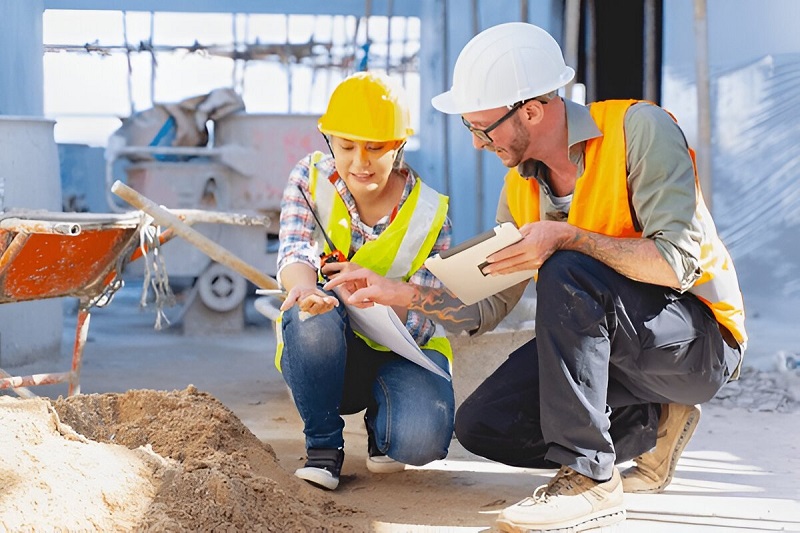Have you ever glanced up at a towering skyscraper and wondered about the strength and resistance keeping it upright? Or marveled at the sturdy, centuries-old heritage structures still standing firm? Perhaps even pondered over the house you bought recently – did your builder use top quality materials? All of these scenarios are consciously or unconsciously associated with the safety, durability, and longevity of built structures around us. Today, we dissect a crucial component that controls the aforementioned factors—construction material testing.
Breaking it down to its elementary level, construction material testing involves a comprehensive array of experiments conducted to verify the physical and mechanical properties of materials used in construction. Aimed towards creating safer, more durable buildings, this examination plays an instrumental role in the field of construction. However, what does it entail precisely, and why is it so critical?
This in-depth article will navigate you through the essential role of construction material testing in ensuring secure and lasting structures, the types of tests conducted, what happens during these tests, the upsides and downsides, and much more.
The Underpinning Pillar: Why Construction Material Testing Is Crucial
Often hidden behind the facade of awe-inspiring structures, lies their robust backbone—the construction materials. The trust we place on a structure’s safety and stability pivots on the quality of these materials. Our bridge to understanding this quality lies in construction material testing.
Beginning near the quarrying stage, these rigorous tests paint a picture of a material’s behaviour under different circumstances. These gauges are not confined to the durability of a substance but extend to other essential characteristics such as resilience, brittleness, thermal properties, and more.
Neglecting this extensive testing could result in inferior quality constructs that pose significant safety risks. Therefore, material testing forms the cornerstone of safe and durable structures in modern construction practices.
Pins On The Map: Types Of Material Testing

When we speak of material testing, it’s not just one all-encompassing test. Various tests are specifically designed for assessing different properties in materials.
Structural integrity tests ensure that the material can withstand the intended load. Durability tests ascertain whether the material can withstand adverse weather conditions and erosion. Fire resistance tests offer data on how the material will behave under extreme heat.
Furthermore, chemical tests rule out harmful substances that may have sneaked into the construction materials, while environmental tests measure a material’s environmental impact. Each of these tests serves a unique purpose, and collectively, they shape the foundation of a secure structure.
The Process: What Happens During Testing?
Intrinsic to understanding why we need material testing is comprehending what happens during the process. This typically involves applying various stresses to the material until it shows signs of deformation or fails completely.
Samples are taken from masses of materials and are subjected to tests that simulate the pressures and stresses they are expected to handle once incorporated into a structure. Tests range from simple procedures such as observing color changes under a microscope to complex experiments using state-of-the-art equipment in laboratories.
The Advantages And Disadvantages Of Construction Material Testing
Just as nearly every procedure in the construction industry, material testing comes with its own set of pros and cons too. However, its advantages far outweigh the disadvantages.
Construction material testing reduces the risks associated with structural failures, increases longevity, ensures compliance with regulations, and enhances overall safety. Importantly, it also contributes positively to the environment by testing for eco-friendliness.
The flip side includes the costs associated with testing and the time it consumes. Also, the results, in certain origins, can sometimes be misleading due to variable quality across a large batch of materials.
The Guidance Of Professionals: Who Performs These Tests?

Given the high-stake outcomes, construction material testing isn’t a task for any Tom, Dick, or Harry. Skilled professionals—often civil engineers or certified technicians—oversee the testing process. They bring expertise, experience, and objectivity into this intricate methodology, ensuring the tests are conducted accurately and efficiently.
Wrapping Up
Construction material testing underpins the security, stability, and durability we seek in our buildings. The meticulous examination these materials undergo ensures every brick, beam, or bolt invested into a building contributes towards its integrity, rather than compromising it.
While sometimes time-consuming and pricey, the pros of this practice astronomically overshadow the minor nuisances it brings along. After all, isn’t the certainty of a building standing tall, safe, and secure, worth this tiny trade-off in time and cost?
So, the next time you admire a modern marvel or rest comfortably in your home, remember, it’s not just a question of good architecture or craftsmanship. Behind the scenes, is the often-overlooked hero, construction material testing, playing a major part in your life and safety.
